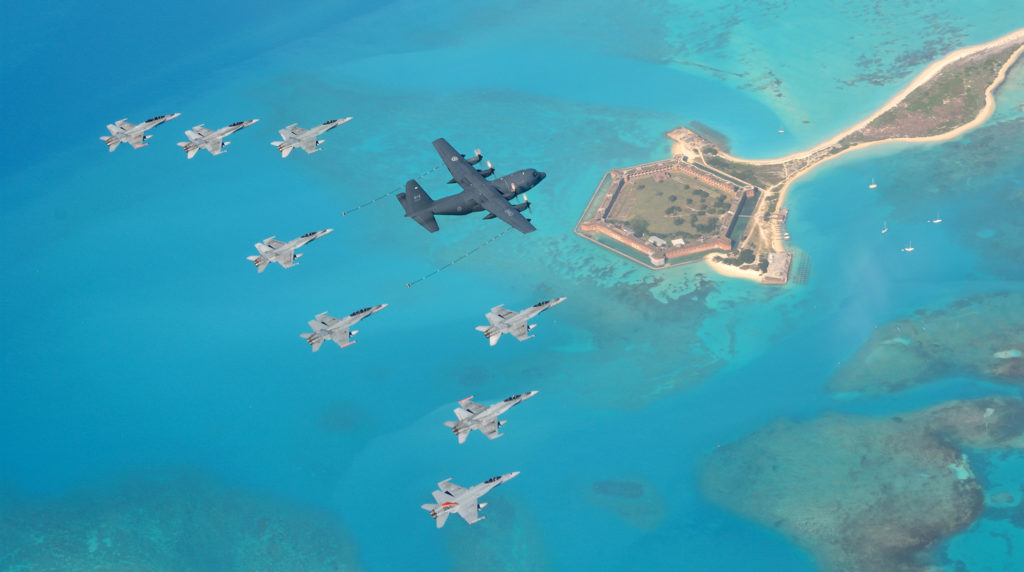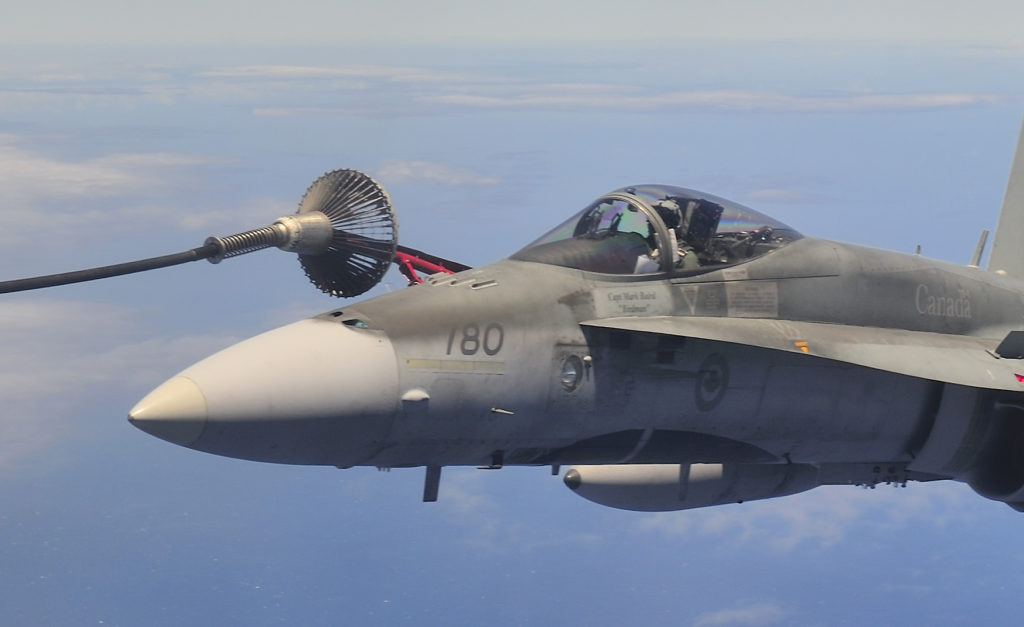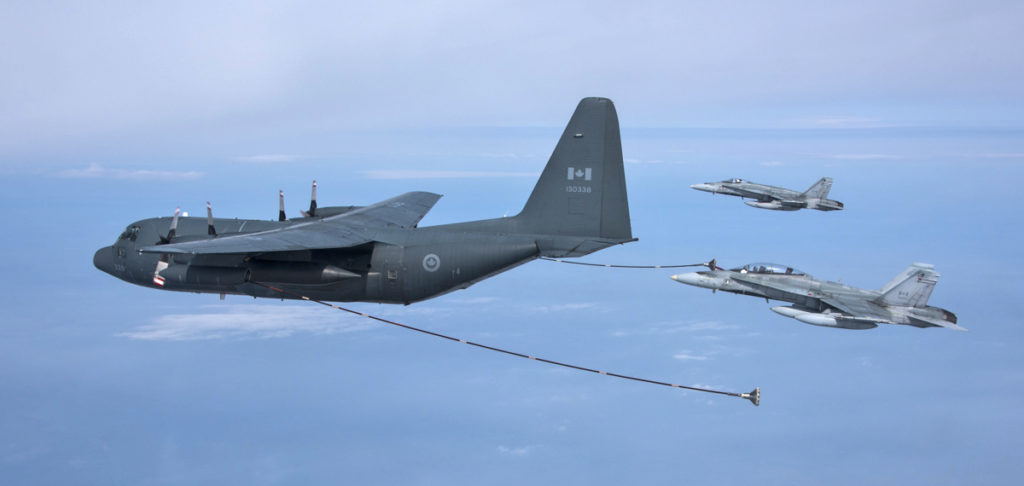Estimated reading time 5 minutes, 59 seconds.
This is a milestone year for 435 Transport and Rescue Squadron, whose members are celebrating 25 years of operational air-to-air refuelling (AAR) with the CC-130HT Hercules tanker aircraft.

435 “Chinthe” Squadron is located in Winnipeg, Man., but reports to 19 Wing Comox, B.C.
As proud refuels for a quarter of a century, 435 AAR crews have seen the world through myriad different exercises and operations, delivering a critical enabling capability for Canadian and allied fighter jets.
By the end of 1992, the Royal Canadian Air Force (RCAF) had taken delivery of five new CC-130H Hercules aircraft. At Northwest Industries Limited in Edmonton, Alta., they were converted to the CC-130HT tanker configuration.
Combining a fuselage tank capable of carrying 24,000 pounds of jet fuel, new fuel lines and drogue-style air refuelling pods, CC-130HTs provided the RCAF with a flexible AAR asset for its probe-equipped fighters.
The first aircraft modified was tail number 130339 and the initial aircrew course was completed in 1993. Shortly thereafter, the squadron carried out its first operational AAR mission.
On Feb. 11, 1993, 435 Squadron assisted in the intercept of a high-jacked Lufthansa Airbus A310 off the East Coast of North America in conjunction with the United States Air Force.
During their first few years of operations, AAR crews from 435 Squadron participated in numerous operations and exercises as aircrew and technicians alike quickly became educated on their new equipment and role.
In these early years, AAR operations were conducted in Europe and northern Canada and AAR exercises took place in the Netherlands and the United States.

In 1998, 435 Squadron deployed to Kuwait as part of Operation Southern Watch. There, the squadron’s tankers helped allied fighters enforce Iraqi compliance with the United Nations Security Council Resolution following the Gulf War.
In 1999, 435 Squadron participated in a 79-day NATO operation named Operation Allied Force, an air campaign conducted over the former republic of Yugoslavia.
CC-130HT aircraft provided refuelling to CF-188 Hornet fighters flying air strike missions from Aviano, Italy.
Since the terrorist attacks on Sept. 11, 2001, the squadron has been continuously engaged in Operation Noble Eagle, providing AAR support in the defence of North American airspace, often from forward operating locations in Canada’s far North.
Crews also deployed to Sicily, Italy, in 2011 as part of Operation Mobile, helping fighter jets tasked to enforce the no-fly zone over Libya.
435’s AAR crews and technicians continue to support yearly exercises with Canadian Hornets and fighter jets from allied countries around the world.
In recent years, the squadron has played a small but critical role at such exercises as Maple Flag in Cold Lake, Alta.; Red Flag in Alaska and Nevada; Cougar South in California; and Alouette Mobile in Louisiana.

More globally, the squadron has supported Exercise Pitch Black in Australia and Arctic Challenge in Finland as the sole RCAF envoy.
As Canada’s only tactical aerial refuelling aircraft, the CC-130HT provides the RCAF with a flexible and global AAR capacity that has been extensively used since its operational introduction in 1993.
With the CC-130HT AAR capability slated for retirement in 2020, this anniversary year provides an opportunity to reflect on a proud history earned during more than 25 years “fuelling the fire.”
There is no doubt that 435 Squadron’s professional and flexible AAR crews will continue to accomplish their missions accomplished, striving to uphold the squadron’s motto of Certi Provehendi–“Determined on Delivery”–until the last successful AAR “poke” is complete.
Museum exhibit
As part of their 25th anniversary celebrations, 435 Transport and Rescue Squadron, in collaboration with the Royal Aviation Museum of Western Canada, proudly unveiled an educational air-to-air refuelling exhibit on May 31, 2018.
For the foreseeable future, museum guests will have the opportunity to learn about AAR in general, and 435 Squadron’s role during more than 25 years of “fuelling the fire.”
The exhibit centrepiece is CC-130HT AAR refuelling pod that is on loan.
Weighing almost 3,000 pounds and measuring more than 14 feet long, the Cobham Mk 32B-751 air refuelling pod, developed by Cobham in the United Kingdom, is attached under the CC-130’s wing to deliver fuel from the aircraft fuel system to a receiver aircraft.
Incorporating a hose and drogue that at full trail extends 78 feet, the refuelling pod is designed to transfer fuel at rates up to 1,136 litres per minute, permitting the timely provision of airborne fuel from tanker to receiving fighter.
Captain Wolter is a member of 435 Transport and Rescue Squadron.








